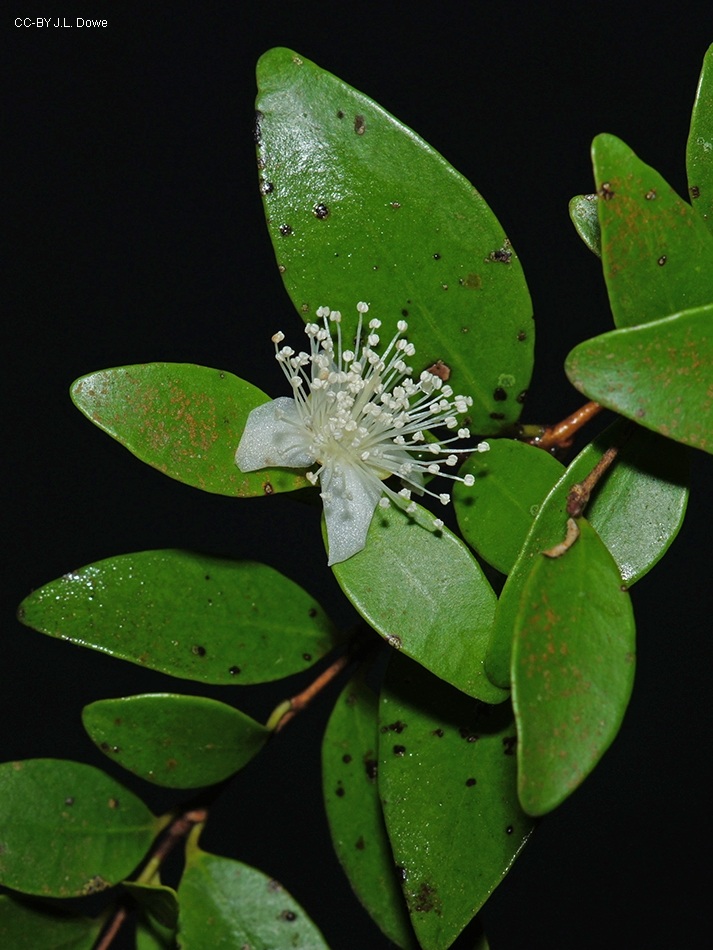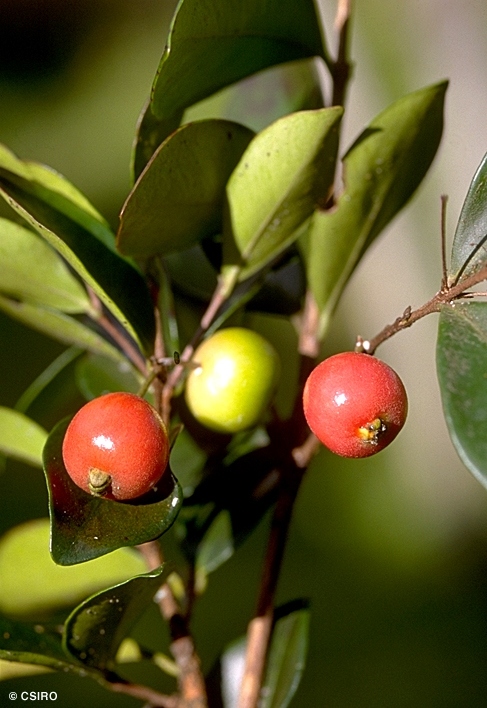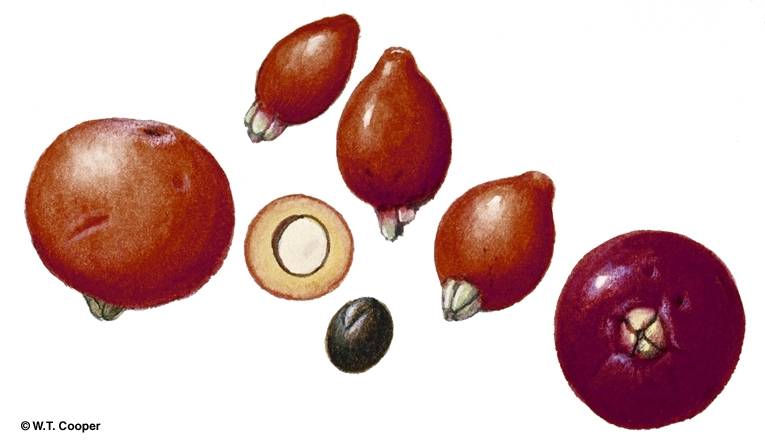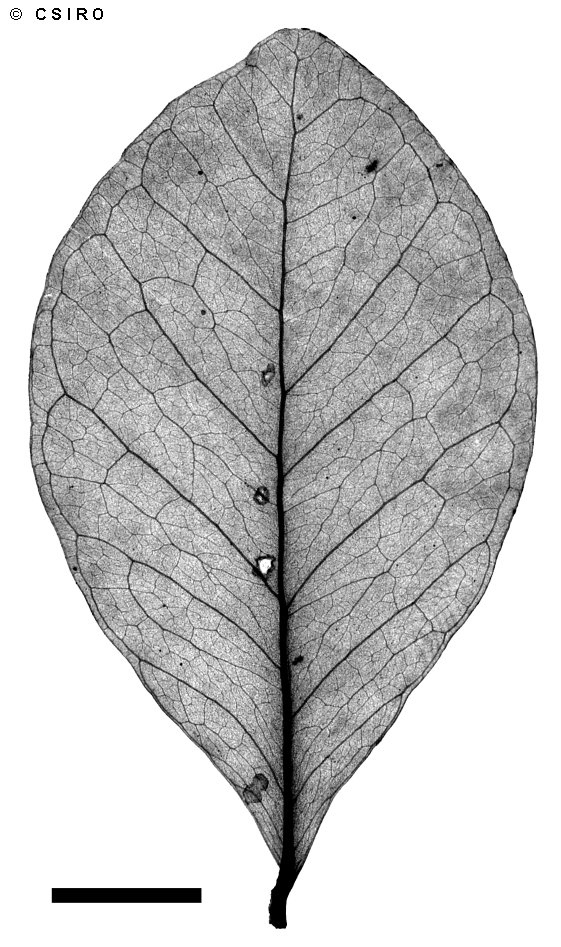Australian Tropical Rainforest Plants - Online edition
Eugenia reinwardtiana (Blume) DC.







Candolle, A.P. de (1828) Prodromus 3: 267.
Cedar Bay Cherry; Beach Cherry; Cherry, Beach
Occasionally grows into a small tree seldom exceeding 30 cm dbh but also flowers and fruits as a shrub.
Inflorescence axillary, never truly terminal, bracts persistent, pubescent, present at anthesis, about 1.5 x 0.7 mm. Flower buds pubescent. Pedicel absent but peduncles long and slender and usually ending in one flower. Calyx tube (hypanthium) pubescent, 2-4 x 2-4 mm, calyx lobes rounded, concave adaxially, more sparsely pubescent than the calyx tube (hypanthium), dimorphic, inner lobes larger, about 2.5-3 mm long, +/- horizontal at anthesis. Petals +/- orbicular, glabrous except for the ciliate margins, about 3-3.5 mm diam., oil dots variable in number, about 30-70 per petal. Outer anther filaments about 3-5 mm long, anthers about 0.5-0.6 x 0.6-0.8 mm, gland inconspicuous, small, terminal, staminal disk broad, +/- level and conforming with the apex of the ovary. Ovules about 6-14 per locule. Style about 2.5-5.5 mm long, approximating the stamens.
Fruits globular, depressed globular or ovoid, sometimes bilobed, attaining about 15-21 x 13-23 mm, calyx lobes persistent at the apex, about 2.5 mm long, pericarp succulent despite included fibres. Seed about 7-12 mm diam., testa free from the pericarp and free from the cotyledons. Cotyledons partly fused together, free towards the apex. Radicle basal.
Occurs in WA, CYP, NEQ, CEQ and southwards as far as south-eastern Queensland. Altitudinal range from sea level to 500 m. Usually grows as a shrub on beaches but also found as a small understory tree in beach forest, monsoon forest and drier, more seasonal rain forest. Seldom found in well developed rain forest. Also occurs in SE Asia, Malesia and the Pacific islands.
Usually a small bushy shrub that will survive in a variety of situations. Sometimes cultivated in coastal conditions for its succulent edible fruit.
Wood specific gravity 0.88. Hyland (1983).





